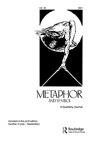Metaphoric Conceptualization of Love Pain or Suffering in Turkish Songs through Natural Phenomena and Natural Disasters
IF 3.3
3区 文学
0 LANGUAGE & LINGUISTICS
引用次数: 5
Abstract
ABSTRACT Traditional Turkish love is identified with suffering. This study investigates how suffering in love is metaphorically conceptualized in Turkish via natural phenomena and disasters. Based on figurative expressions in sad love songs of Arabesque and Art music genres, the study reveals that love pain/suffering is expressed through three salient metaphors: 1) love paın/sufferıng ıs natural phenomena, 2) love paın/sufferıng ıs natural dısasters, and 3) the overarching metaphor (the suffering) lover’s body ıs a landscape (affected by weather conditions or natural disasters). It was unearthed from metaphoric expressions in lyrics that as part of a cultural scenario, natural phenomena and disasters are profiled as internalized forces culturally imagined to directly affect vital body parts to express the emotional distress or anguish of the Turkish lover. The overarching metaphor lover’s body ıs a landscape is a manifestation of conceptual integration producing a novel structure in which natural phenomena appear to occur in or to culturally selected body parts or organs. The study makes a distinction between the three metaphors above about body parts and the well-known love ıs a natural force (which affects the WHOLE body as if it were an object being swept away or blown about, etc.)从自然现象和自然灾害看土耳其歌曲对爱情、痛苦和苦难的隐喻概念化
摘要土耳其传统的爱与痛苦联系在一起。这项研究调查了爱情中的痛苦是如何通过自然现象和灾难在土耳其语中被隐喻性地概念化的。基于阿拉伯音乐和艺术音乐流派悲伤情歌中的比喻表达,研究表明,爱的痛苦/苦难通过三个显著的隐喻来表达:1)爱的自然现象,2)爱的人的自然现象,和3)总体隐喻(痛苦)情人的身体是一个景观(受天气条件或自然灾害的影响)。从歌词中的隐喻表达中发现,作为文化场景的一部分,自然现象和灾难被描述为文化上想象的内在力量,直接影响身体的重要部位,以表达土耳其情人的情感痛苦。总体隐喻情人的身体是一种景观,是概念整合的表现,产生了一种新颖的结构,在这种结构中,自然现象似乎发生在文化选择的身体部位或器官中。这项研究区分了上面关于身体部位的三个隐喻和众所周知的爱是一种自然力(它影响整个身体,就好像它是一个被冲走或被吹走的物体一样)
本文章由计算机程序翻译,如有差异,请以英文原文为准。
求助全文
约1分钟内获得全文
求助全文
来源期刊

Metaphor and Symbol
Multiple-
CiteScore
2.90
自引率
0.00%
发文量
23
期刊介绍:
Metaphor and Symbol: A Quarterly Journal is an innovative, multidisciplinary journal dedicated to the study of metaphor and other figurative devices in language (e.g., metonymy, irony) and other expressive forms (e.g., gesture and bodily actions, artworks, music, multimodal media). The journal is interested in original, empirical, and theoretical research that incorporates psychological experimental studies, linguistic and corpus linguistic studies, cross-cultural/linguistic comparisons, computational modeling, philosophical analyzes, and literary/artistic interpretations. A common theme connecting published work in the journal is the examination of the interface of figurative language and expression with cognitive, bodily, and cultural experience; hence, the journal''s international editorial board is composed of scholars and experts in the fields of psychology, linguistics, philosophy, computer science, literature, and media studies.
 求助内容:
求助内容: 应助结果提醒方式:
应助结果提醒方式:


